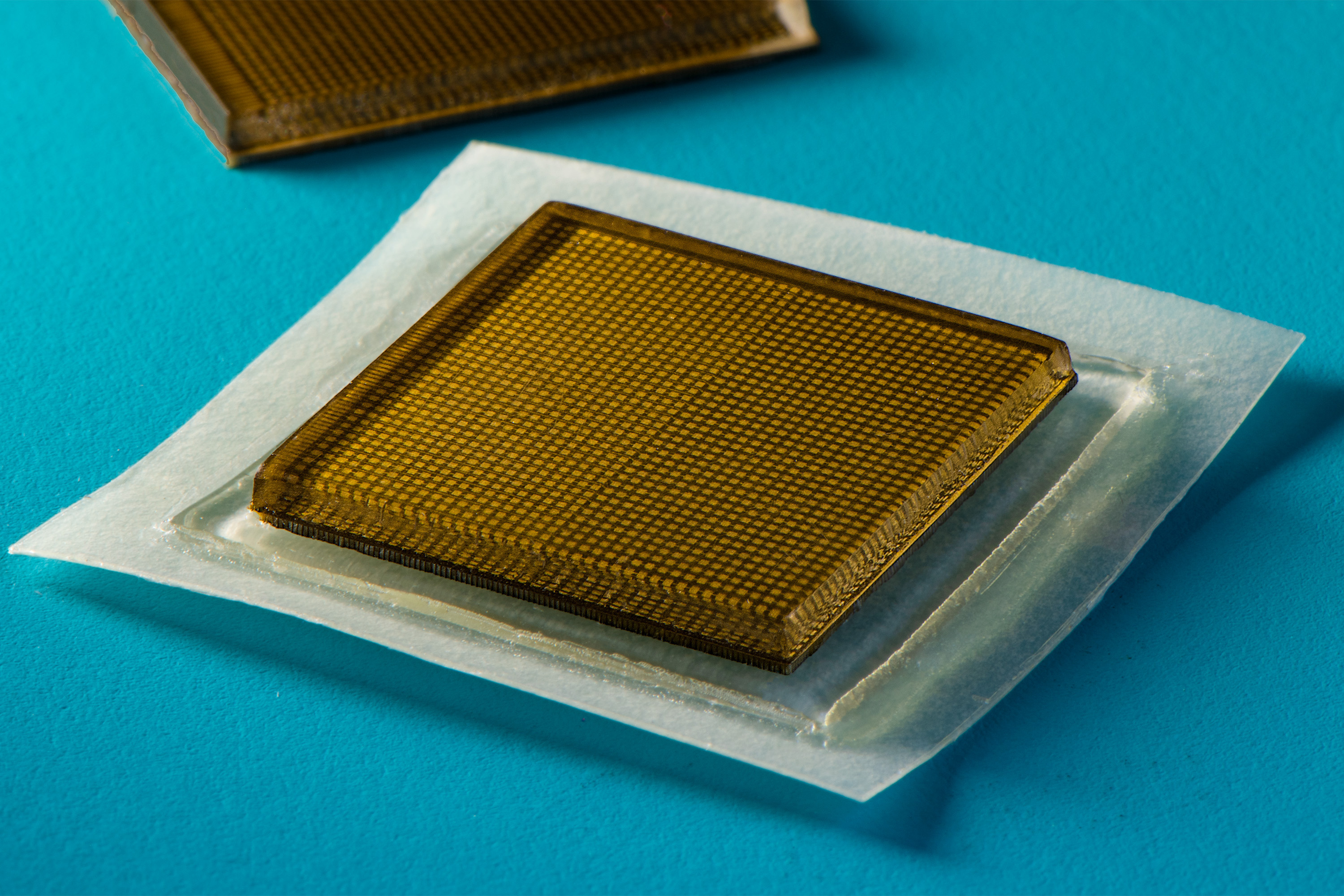Stick-on ultrasound
A wearable adhesive device can monitor internal organs for up to two days.

What if accessing clear images of your insides were as easy as slapping on a Band-Aid? A team led by Professor Xuanhe Zhao could make that possible with its design for a stamp-size device that sticks to skin and can provide continuous ultrasound imaging of internal organs for 48 hours.
In conventional ultrasound imaging, a technician coats a patient’s skin with a gel that transmits sound waves. A probe, or transducer, is then pressed against the gel, sending waves into the body that echo off internal structures and back to the probe, where the echoed signals are translated into visual images.
This setup makes it difficult to image organs over a long period of time. The new design, however, combines a rigid array of transducers with a stretchy adhesive layer that allows the device to conform to the moving body while the transducers maintain the same position relative to each other, yielding continuously clear images.
When the researchers applied the stickers to volunteers, they produced live, high-resolution images of major blood vessels and deeper organs such as the heart and stomach during activities such as sitting, standing, jogging, and biking.
The current design requires connecting the stickers to instruments that translate the reflected sound waves into images, but if the devices can be made to operate wirelessly—a goal the team is working toward—they could be made into wearable products that patients could take home from a doctor’s office or even buy at a pharmacy. They could even be used to monitor the progression of tumors or the development of fetuses in the womb.
“We imagine we could have a box of stickers, each designed to image a different location of the body,” Zhao says. “We believe this represents a breakthrough in wearable devices and medical imaging.”
Keep Reading
Most Popular
Large language models can do jaw-dropping things. But nobody knows exactly why.
And that's a problem. Figuring it out is one of the biggest scientific puzzles of our time and a crucial step towards controlling more powerful future models.
The problem with plug-in hybrids? Their drivers.
Plug-in hybrids are often sold as a transition to EVs, but new data from Europe shows we’re still underestimating the emissions they produce.
How scientists traced a mysterious covid case back to six toilets
When wastewater surveillance turns into a hunt for a single infected individual, the ethics get tricky.
Google DeepMind’s new generative model makes Super Mario–like games from scratch
Genie learns how to control games by watching hours and hours of video. It could help train next-gen robots too.
Stay connected
Get the latest updates from
MIT Technology Review
Discover special offers, top stories, upcoming events, and more.